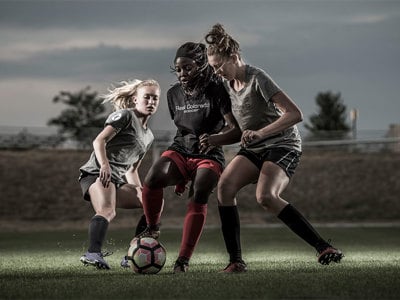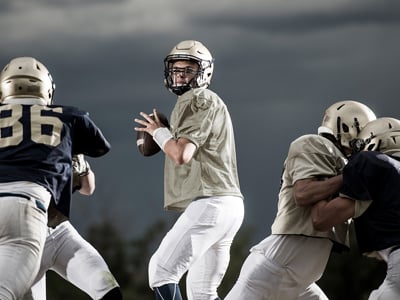- Doctors & Departments
-
Conditions & Advice
- Overview
- Conditions and Symptoms
- Symptom Checker
- Parent Resources
- The Connection Journey
- Calm A Crying Baby
- Sports Articles
- Dosage Tables
- Baby Guide
-
Your Visit
- Overview
- Prepare for Your Visit
- Your Overnight Stay
- Send a Cheer Card
- Family and Patient Resources
- Patient Cost Estimate
- Insurance and Financial Resources
- Online Bill Pay
- Medical Records
- Policies and Procedures
- We Ask Because We Care
Click to find the locations nearest youFind locations by region
See all locations -
Community
- Overview
- Addressing the Youth Mental Health Crisis
- Calendar of Events
- Child Health Advocacy
- Community Health
- Community Partners
- Corporate Relations
- Global Health
- Patient Advocacy
- Patient Stories
- Pediatric Affiliations
- Support Children’s Colorado
- Specialty Outreach Clinics
Your Support Matters
Upcoming Events
Colorado Hospitals Substance Exposed Newborn Quality Improvement Collaborative CHoSEN Conference (Hybrid)
Monday, April 29, 2024The CHoSEN Collaborative is an effort to increase consistency in...
-
Research & Innovation
- Overview
- Pediatric Clinical Trials
- Q: Pediatric Health Advances
- Discoveries and Milestones
- Training and Internships
- Academic Affiliation
- Investigator Resources
- Funding Opportunities
- Center For Innovation
- Support Our Research
- Research Areas

It starts with a Q:
For the latest cutting-edge research, innovative collaborations and remarkable discoveries in child health, read stories from across all our areas of study in Q: Advances and Answers in Pediatric Health.


Concussion Myths and Misconceptions

Many parents ask, “How can my child avoid a concussion?” In reality, there’s no foolproof way to avoid concussions. This is one of many myths and misconceptions about concussions that our experts can help debunk.
For more than a decade, our concussion research team and sports medicine providers have been at the forefront of understanding concussions in young athletes. Our team’s research has been instrumental in updating and introducing new concussion assessment tools.
We caught up with Brittney Millett, athletic trainer and Concussion Program Coordinator at our Sports Medicine Center, to get expert advice and insight into new research on concussions. See how she addresses concussion questions and myths.
“How do I prevent a concussion?”
“There are no great ways to completely prevent a concussion, but there are ways to reduce the risk of getting a concussion,” says Millett.
Concussions are a common part of playing sports, especially sports with direct and heavy contact. But even young athletes who play sports with little or no contact, such as volleyball or tennis, can get concussions. It’s important that coaches and staff encourage proper techniques for each sport (including tackling in football and heading in soccer) and help build core and body strength during training.
“The rule changes in youth sports, including adolescent hockey and the number and duration of practices in football, have been shown to reduce the rate of concussions during practice,” says Millett.
It’s important that parents and coaches ensure these rule changes are in place in leagues their children are involved in. Rule changes that help prevent concussions include:
- Banning body checking in youth ice hockey
- Requiring mouth guards in child and adolescent ice hockey
- Limiting the number, duration and intensity of contact practices in football
- Having neuromuscular training warm-up programs in rugby
- Immediate removal from play following an actual or suspected concussion
- Return-to-sport approval from a healthcare provider
“Do helmets prevent concussions?”
“While a well-fitting helmet is important to reducing catastrophic injury, it cannot prevent concussions,” says Millett.
Many people believe a helmet can prevent concussions in young athletes. However, a proper helmet for each sport doesn’t prevent injury entirely but is meant to reduce the severity of the injury.
Millett also gets questions about products that attach to a helmet to track impact over time. There’s no substantial evidence that these types of products work to prevent concussions. They can’t reduce the force of a blow to the brain but do track how many hits the helmet is taking during a game or practice. Parents, coaches, staff and officials are the first line to alerting medical staff that an athlete may need a concussion evaluation.
“I didn’t pass out, so it can’t be a concussion.”
One of the most common misconceptions is that an athlete must lose consciousness to have a concussion – but that couldn’t be farther from the truth.
Millett says less than 10% of concussions include a loss of consciousness. Each situation and injury are different and getting knocked out after an impact can be a sign of a concussion, but is not required for an injury to be a concussion.
“I shouldn’t let my athlete sleep after a concussion.”
While it’s true that one of the main symptoms of a concussion is increased tiredness, the best medicine is to rest and recover and you don’t need to avoid sleep. Athletes should continue their regular sleep cycle, if not incorporate more naps, if needed.
“If a parent is concerned about alertness or responsiveness, checking them during the night is suggested,” says Millett. “But not allowing them the sleep they need can prevent their brain from much-needed healing.”
“Ibuprofen isn’t safe after a concussion.”
Simply put, there’s no evidence that suggests young athletes shouldn’t take ibuprofen or other non-steroidal anti-inflammatory drugs (NSAIDs) if they have a concussion.
It’s a common misconception that taking NSAID medication for a headache after getting a concussion can make it worse. Millett notes that serious injuries like brain bleeds are typically obvious and most athletes would be under professional medical care for them. Our experts recommend over the counter NSAIDs such as ibuprofen to help manage symptoms in the short-term, with dosage based on age and weight, to help with pain.
“Concussion symptoms can be delayed by days.”
“Typically, concussion symptoms develop immediately in minutes, or hours, but it is very unlikely for symptoms to develop several days after the injury,” says Millett.
It’s true that concussion symptoms can be delayed like other injuries, but it’s very unusual for symptoms of a concussion to emerge days after. In this case, it’s best to seek medical attention if an athlete has concussion symptoms but wasn’t evaluated by medical professionals.
“Concussions will cause anxiety or mental health issues later.”
We know that the added stress from a concussion can manifest itself as anxiety and depression – especially when athletes can’t play their sports and need to recover away from their friends. But getting back to daily life like school and light activity can help to curb those anxious feelings.
Importantly, there’s no evidence that concussions are directly linked to suicide or an increased risk of mental health struggles in adult life.
“I have to hit my head to have a concussion.”
While it may be surprising, you don’t have to hit your head to have a concussion. Whiplash from a car accident or a fall that transmits force through the neck to the brain can cause symptoms of a concussion.
“I can return to play as soon as I feel OK after a concussion.”
Colorado law actually protects athletes from returning to play before they get assessed and cleared by a medical professional. Athletes can’t return to play the same day that a provider suspects they have a concussion under any circumstances.
“There are no treatments for a concussion.”
Actually, there are treatments. The most important way to heal soon after an injury is to rest, but 24 to 48 hours after a concussion, it’s encouraged to get back to normal life and activities.
“Getting back to light exercise and returning to school can be beneficial for brain function and anxiety,” says Millett, “as long as there isn’t a risk of falling or contact.”
Physical therapy can also help with dizziness, coordination, neck function and range of motion to decrease headache and other concussion symptoms, especially if kids don’t recover after the first two weeks.
“Baseline testing will help prevent concussions.”
Baseline testing can’t prevent concussions but can help diagnose them. Millett notes that baseline testing should be done by an appropriate health care provider, in a quiet, distraction-free environment, to help improve the reliability of the results.
“We can’t always control the location where concussion testing happens,” says Millett. “Different environments can give different results and reduce accuracy of the baseline test.”
There are updated versions of concussion tools available, including the Sports Concussion Assessment Tool (SCAT6 for adolescent and SCAT6 for under 12), which can be used to evaluate athletes soon after a concussion.
Concussion tips for parents
One of the biggest tips that Millett gives to parents is about school.
“It’s important for kids to get back to school as soon as possible,” says Millett. “This may require some modifications such as avoiding crowded hallways and loud assemblies and decreased academic work or more time to study, depending on symptoms.”
Millett also reminds parents that concussions can happen at any time, whether that’s during practice, sporting events, playing with friends or even riding in a car. But by getting back to daily life and exercise, and with the right treatment and a little bit of time, concussions typically heal well.
Concussion tips for coaches
Coaches are often the first to recognize the signs and symptoms of a concussion on or off the field so they should know what to look for. Commonly, young athletes with concussions experience a headache, nausea, vomiting, problems concentrating or extreme tiredness. Along with those symptoms, the Concussion Recognition Tool (CRT6) can help parents and coaches identify athletes with a suspected concussion and provide immediate management recommendations. As the first set of eyes on athletes, coaches should err on the side of caution and remove athletes from activity if they suspect a concussion.
With research, we’re constantly learning about the common misconceptions about concussions. As Millett says, we want to keep kids active and doing what they love. This means taking signs and symptoms seriously, protecting them with the best equipment and ensuring they are strong and using the proper techniques.



 720-777-0123
720-777-0123






